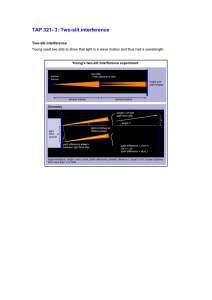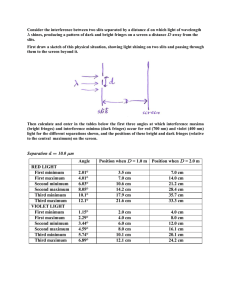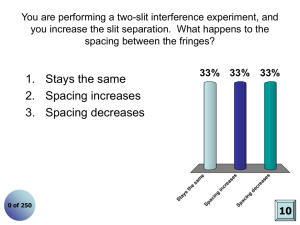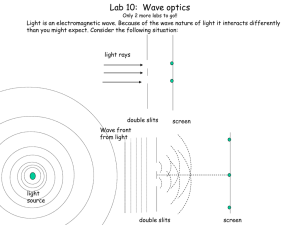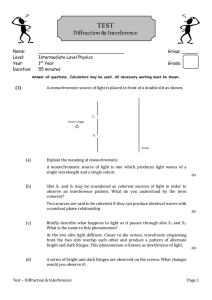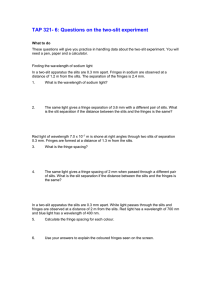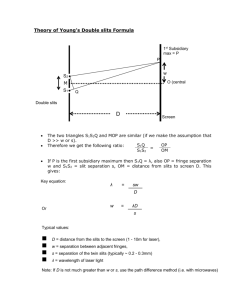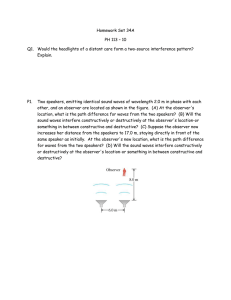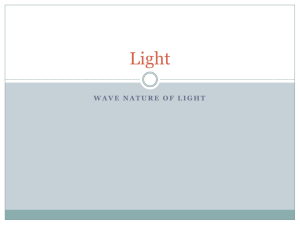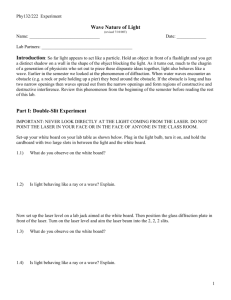Physics Quiz: Wave Interference & Polarization
advertisement
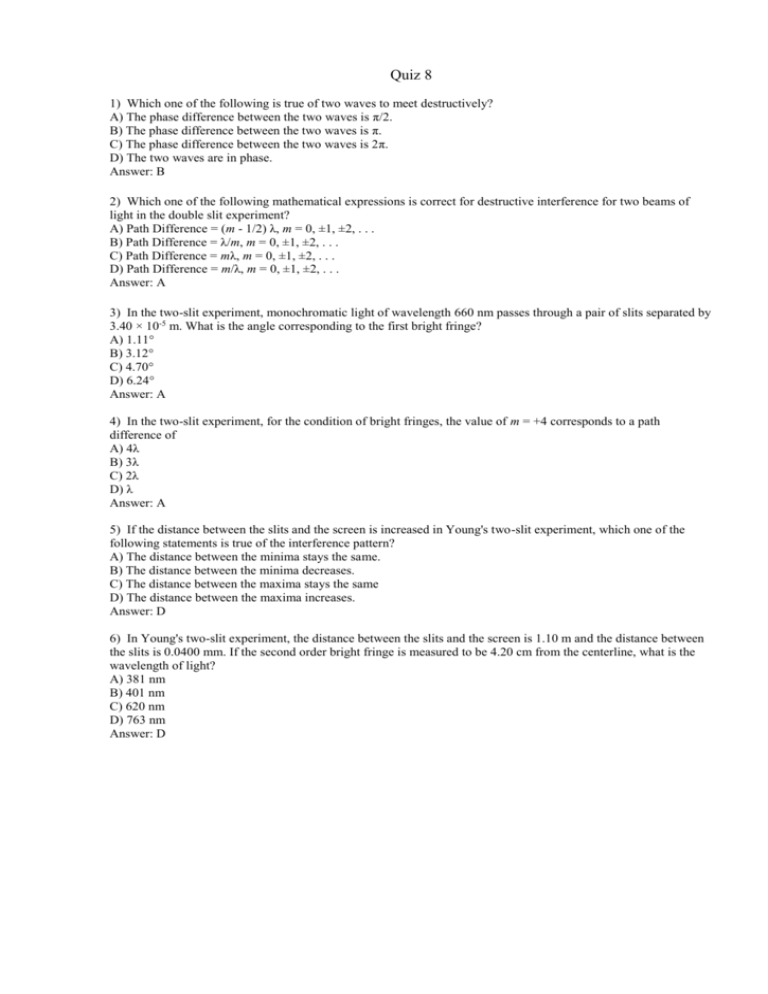
Quiz 8 1) Which one of the following is true of two waves to meet destructively? A) The phase difference between the two waves is π/2. B) The phase difference between the two waves is π. C) The phase difference between the two waves is 2π. D) The two waves are in phase. Answer: B 2) Which one of the following mathematical expressions is correct for destructive interference for two beams of light in the double slit experiment? A) Path Difference = (m - 1/2) λ, m = 0, ±1, ±2, . . . B) Path Difference = λ/m, m = 0, ±1, ±2, . . . C) Path Difference = mλ, m = 0, ±1, ±2, . . . D) Path Difference = m/λ, m = 0, ±1, ±2, . . . Answer: A 3) In the two-slit experiment, monochromatic light of wavelength 660 nm passes through a pair of slits separated by 3.40 × 10-5 m. What is the angle corresponding to the first bright fringe? A) 1.11° B) 3.12° C) 4.70° D) 6.24° Answer: A 4) In the two-slit experiment, for the condition of bright fringes, the value of m = +4 corresponds to a path difference of A) 4λ B) 3λ C) 2λ D) λ Answer: A 5) If the distance between the slits and the screen is increased in Young's two-slit experiment, which one of the following statements is true of the interference pattern? A) The distance between the minima stays the same. B) The distance between the minima decreases. C) The distance between the maxima stays the same D) The distance between the maxima increases. Answer: D 6) In Young's two-slit experiment, the distance between the slits and the screen is 1.10 m and the distance between the slits is 0.0400 mm. If the second order bright fringe is measured to be 4.20 cm from the centerline, what is the wavelength of light? A) 381 nm B) 401 nm C) 620 nm D) 763 nm Answer: D 7) Figure 25-3 shows three polarizing disks having parallel planes with the direction of the transmission axis in each case. The disks are centered on a common axis. If a plane polarized beam of light is incident from left on the first disk with an intensity of I0 =40 W/m2. What is the transmitted intensity coming out of the third disk, when θ1 = 10°, θ2 = 40°, θ3 = 70°? A) 40 W/m2 B) 18 W/m2 C) 0 W/m2 D) 22 W/m2 Answer: D 8) In a double-slit interference experiment you are asked to use laser light of different wavelengths and determine the separation between adjacent maxima. You observe that this separation is greatest when you illuminate the double slit with A) blue light. B) green light. C) red light. D) The separation is the same for all wavelengths. Answer: C
